How to connect to Aspentech APRM?
Introduction
Aspen Production Record Manager is an information management system for batch type data. A batch in Production Record Manager is subdivided into subbatches and contains attributes called characteristics.
Characteristics represent most types of attributes, including start and end times, batch header data, units, recipe information, batch end data, and so on. In addition, Production Record Manager can generate certain attributes dynamically, such as tag statistics, when requested. The batches are grouped by area and one or more batch areas exist in a Production Record Manager server.
Asset capability
Our provider for Aspen Production Record Manager implements the asset capability and uses data from the area definition to populate the asset hierarchy in TrendMiner. The root node of the asset hierarchy is the area itself. The children nodes of an area node are created using “Unit Definitions". The asset hierarchy has a fixed depth of two.
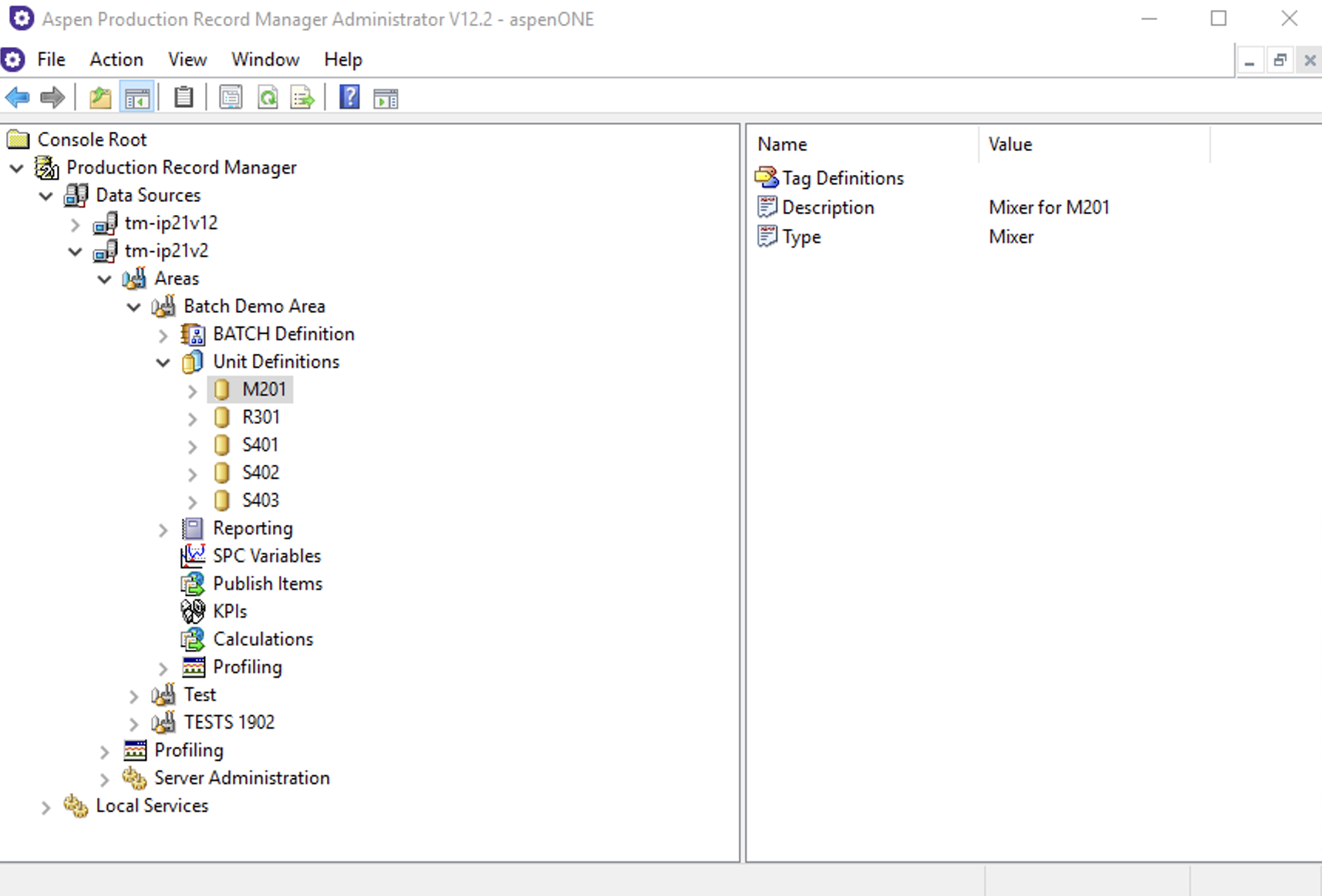
Area and Unit Definitions in Aspen Production Record Manager Administrator
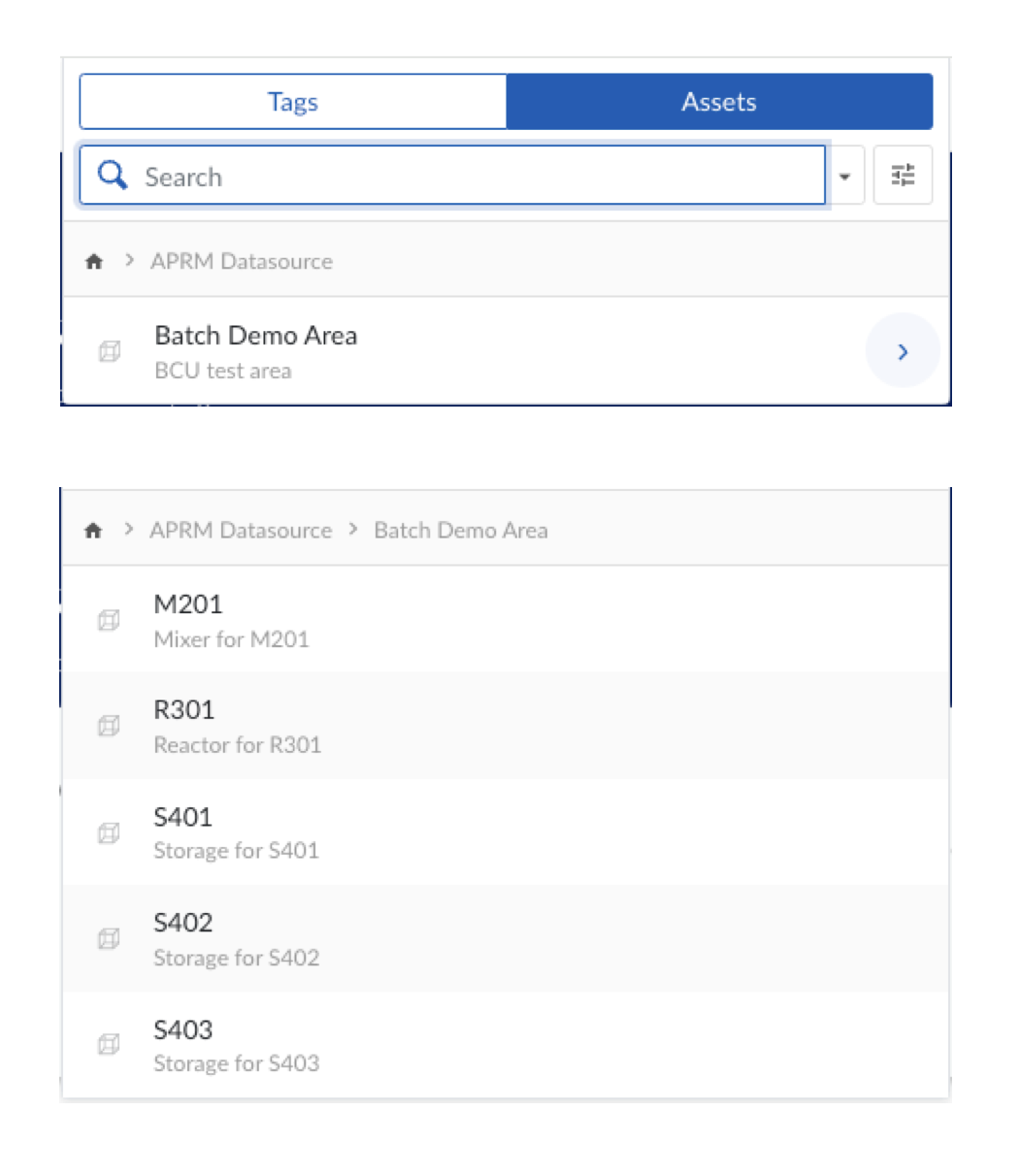
Asset hierarchy in TrendMiner
Context capability
Our provider for Aspen Production Record Manager also implements the context capability and uses data from the area definition to populate context items in TrendMiner.
Context Item Types
The provider will create Context Item Types for every subbatch definition in the area definition, and that type will be linked to the context items.
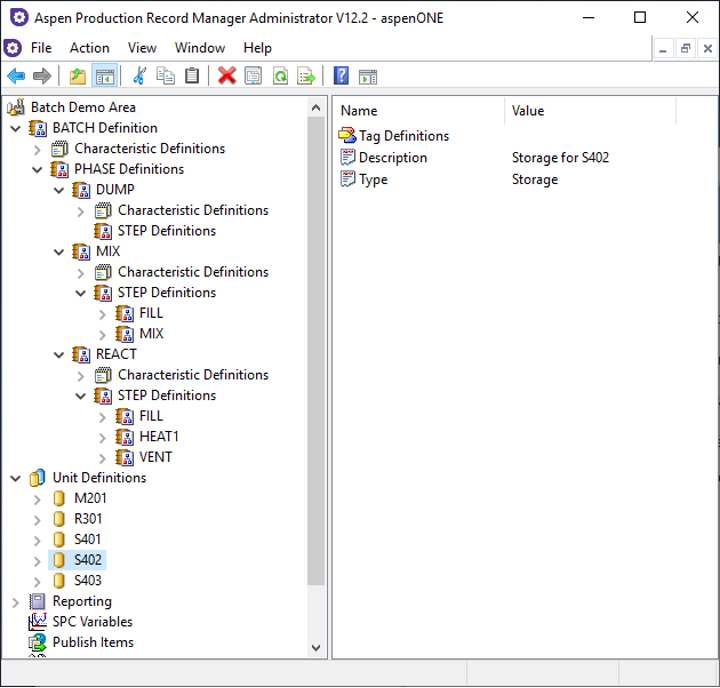
Components
The link between the asset hierarchy and the context items is established using components in TrendMiner. The provider uses the Unit Characteristic from the subbatches of Aspen Production Record Manager to determine the component of a context item. The subbatch level where the Unit Characteristic is defined in Aspen Production Record Manager can be configured by the customer. Since a unit is generally a physical piece of process equipment, every child subbatch of the subbatch level which defines the Unit Characteristic is also conceptually linked to that unit. This is why the following logic is implemented in the provider:
If a unit characteristic is defined on the subbatch level of the subbatch, the context item of this subbatch will be assigned to a component that represents the unit.
If a unit characteristic is defined on a subbatch level lower than the subbatch - lower level means higher in the ancestor hierarchy, the unit characteristic is inherited from the unit of the ancestor.
If a unit characteristic is not defined on a subbatch level lower than the subbatch, the context item will be assigned to a component that represents the area.
This comes into play when the user starts visualizing multiple subbatch levels at once. Together with the possibility to include the children of a component during filtering it would render the following Gantt, without the users knowing which units belong to the area.
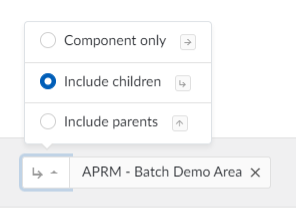
Gantt
Combining the Context Item Types and the implementation of the above component logic, will give the following result in the Gantt view of TrendMiner:
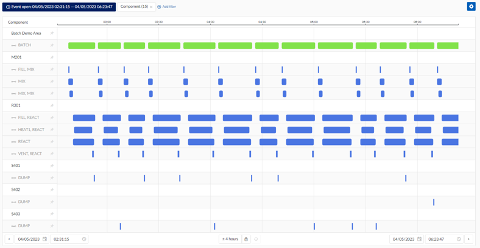
Note
Multiple occurrences of the same subbatches (instances) will be shown in the same swim lane, and the swim lane will be expandable/collapsible.
Context Item Fields
The provider generates Context Item Fields based on the string, numeric, boolean and time characteristics that are available on the subbatches of Aspen Production Record Manager. The existence of characteristics and the level on which they are defined is completely dependent on the configuration of the Subbatch Definition implemented in the environment of the the customer.
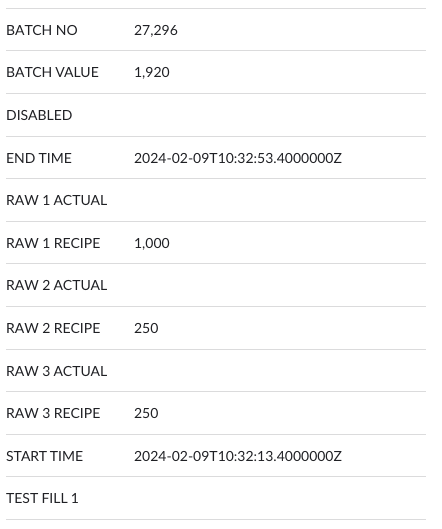 |
Context item fields
Multiple occurrences (instances) of the same characteristic can be created during the execution of a subbatch. If a subbatch has multiple instances for a specific characteristic, the characteristics are suffixed with the instance number of the characteristic e.g., BATCH_NO_1 and BATCH_NO_2.
Designators
Designators are characteristics that uniquely identify a batch. These characteristics reside on a batch level but the provider makes these characteristics available on every level in the subbatch hierarchy. If ”BATCH NO” is the designator, all the subbatches will also receive “BATCH NO“ as a field.
Provider generated property - Lineage
To make the lineage of a context item more apparent, the provider generates the Lineage property, using the same semantics as the Batch Detail Tool.
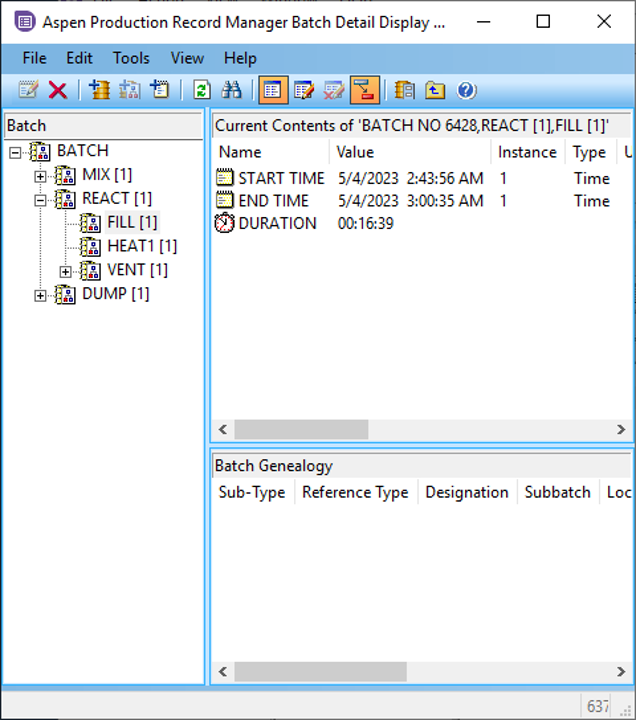
Batch Detail Tool
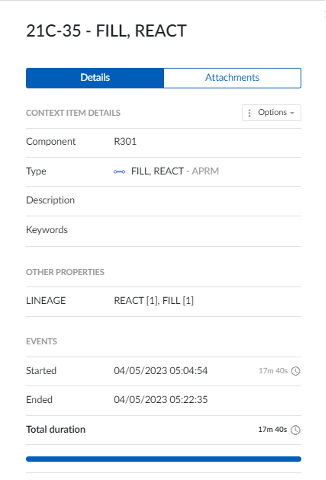
Lineage property in TrendMiner
How to deploy?
AtBatch21ApplicationInterface
Our APRM provider uses the AtBatch21ApplicationInterface library which is a component of the AspenONE Manufacturing Execution Systems. This library is installed when you install the Aspen Production Record Manager Server. If Plant Integrations is deployed on the same server, no additional software / configuration is required to use the provider. If it is required to install Plant Integrations of a different server, the Aspen Desktop Application must be installed on the Plant Integrations Service.
Make sure you select the following components from the AspenOne Manufacturing Execution Systems-installer from AspenTech:
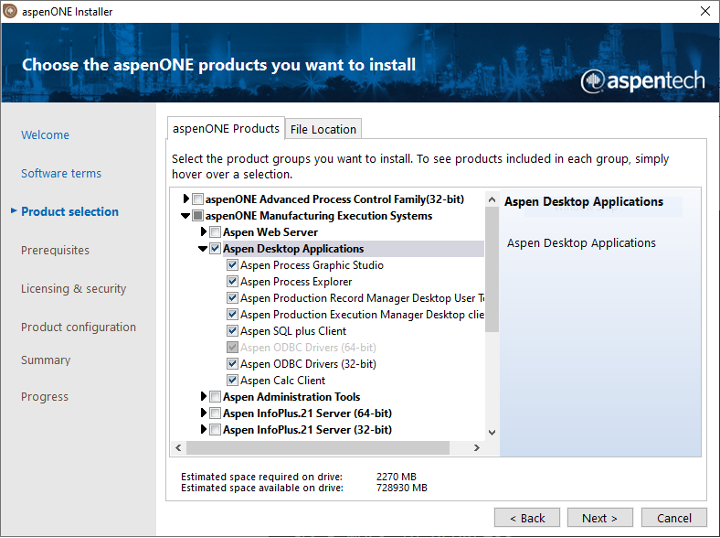
Installing the Aspen Desktop Applications
Important
Because the library uses DCOM, the connector server (Plant Integrations) MUST be in the same domain as the Aspen Production Record Manager server.
Connector (Plant Integrations)
Plant Integrations must be configured to run under an identity that has access to Aspen Production Record Manager. This user must be a member of the ‘Distributed COM Users ’group on Aspen Production Record Manager server. If ARPM is configured to use Role-based security, be sure to grant the identity the correct roles. To configure role base security within Aspen Production Record Manager(APRM), a user account needs to be added to a role in AFW Security Manager and then assign the role to the desired Batch/Subbatch/Characteristic/Report with the intended permissions in APRM. Due to some limitations in Plant Integration, only one user account can be configured to interact with APRM being that account the same that operates Plant Integration application pool in IIS. The chosen user account also needs modify permissions at folder level where Plant Integration resides.
Important
More detail information regarding APRM configuration can be found by opening APRM Administrator, open Help menu and choose Help on APRM Administrator.
AFW Security Manager
Notice
In case the TrendMiner connector is running on a separate server (not the APRM server) the following steps should be executed on the APRM server.
Open Application and Sign-in
Open Windows Start menu and search AFW Security Manager
Fill the User and Password or Use Operating System Logon User by checking the checkbox
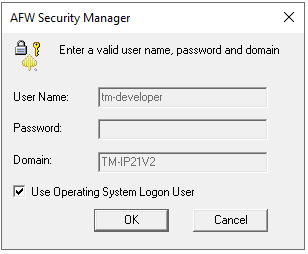
Install role-based security for APRM
Right-click Application in the left pane of AFW Security Manager and click All Tasks > Import Application
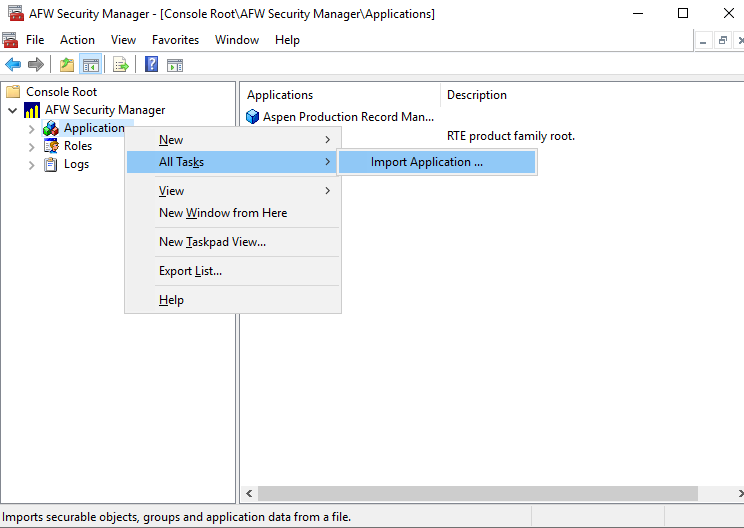
Open Batch21.xml found in C:\Program Files\AspenTech\Batch.21\Server\Setup and APRM is now visible in Applications
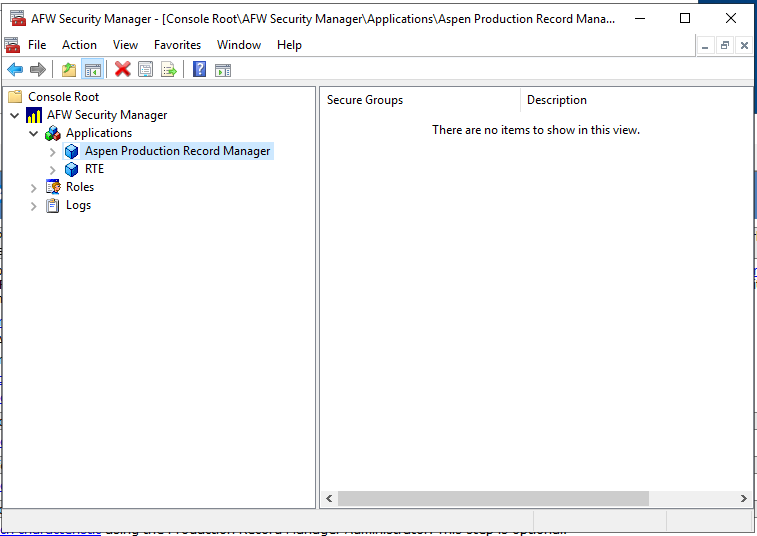
Notice
The file might be found in a different location. E.g. “C:\Program Files\AspenTech\Production Record Manager\Server\Setup”.
To add the application manually, please follow the instructions found on APRM documentation in section “Configuring Role-Based Security”.
Create Roles
Right-click Roles in the left pane of AFW Security Manager and click New > Role
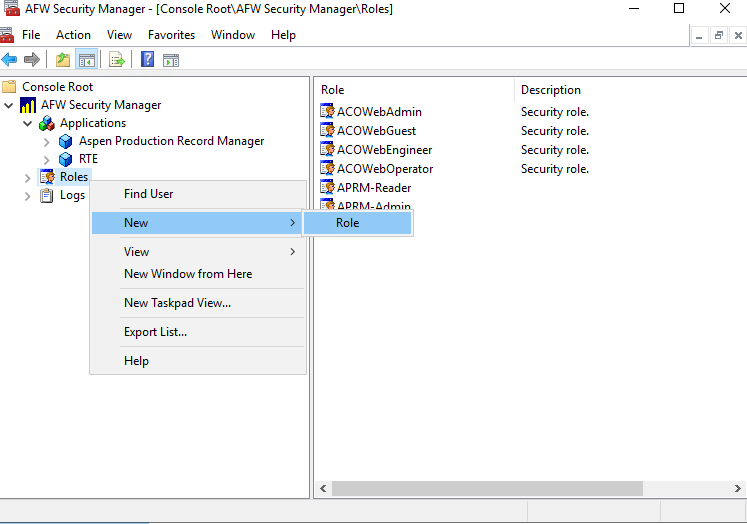
Fill the desire Name for the role and click Ok
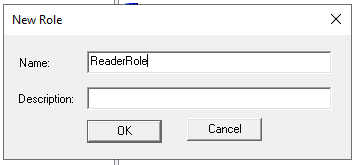
Assign Users to Roles
Click Roles in the left pane of AFW Security Manager and all existing roles should be visible in the content window
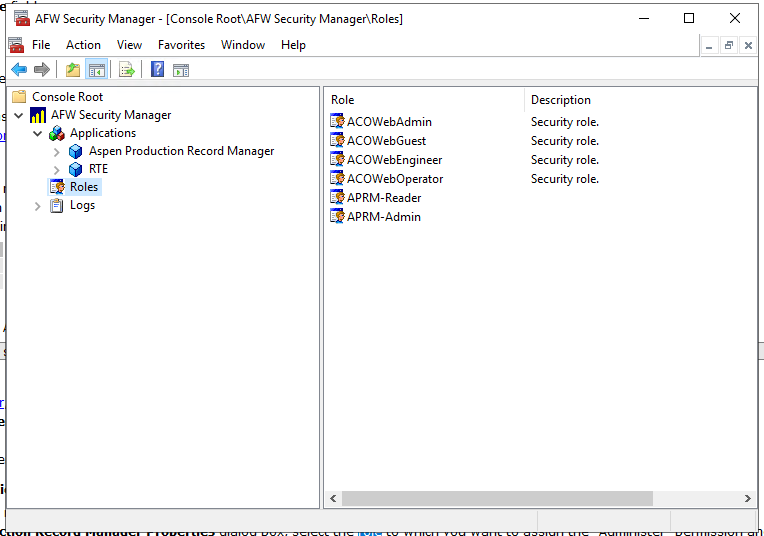
Right-click the role to which to assign the users and click Properties
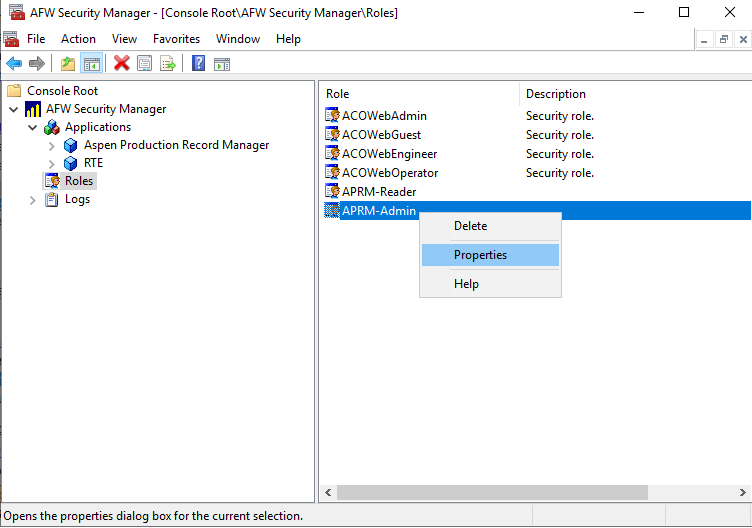
Navigate to Members tab and click Add to assign users to role
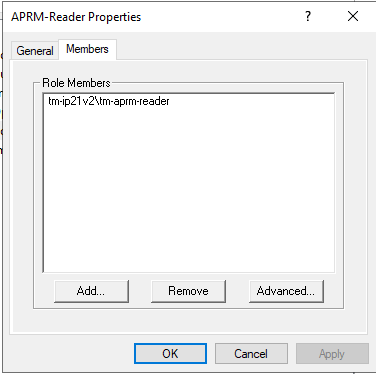
Choose the desired user and click Ok
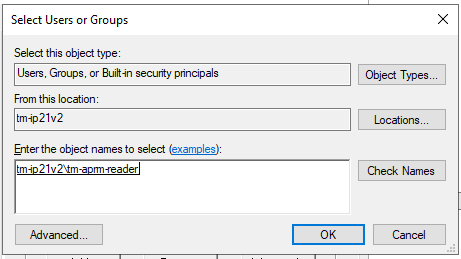
Aspen Production Record Manager Administrator
Notice
In case the TrendMiner connector is running on a separate server (not the APRM server) the following steps should be executed on the APRM server.
Open Application
Open Windows Start menu and search Aspen Production Record Manager Administrator
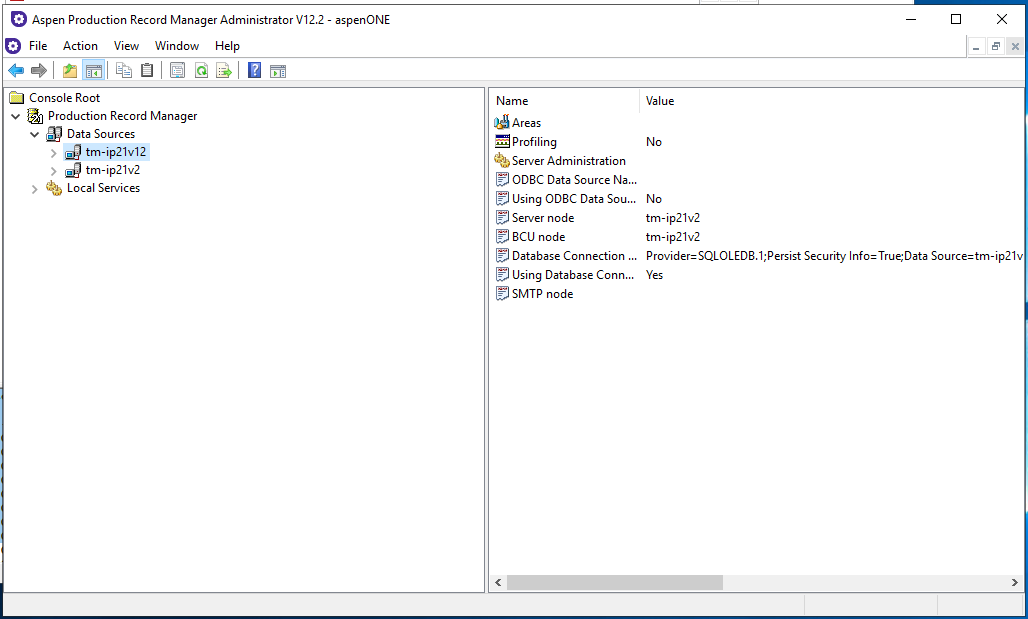
Configure Permissions
Important
To configure permissions at any level Batch/Subbatch/Characteristic/Report, the method is the same.
Right-click on the level to which to set permissions and click Properties
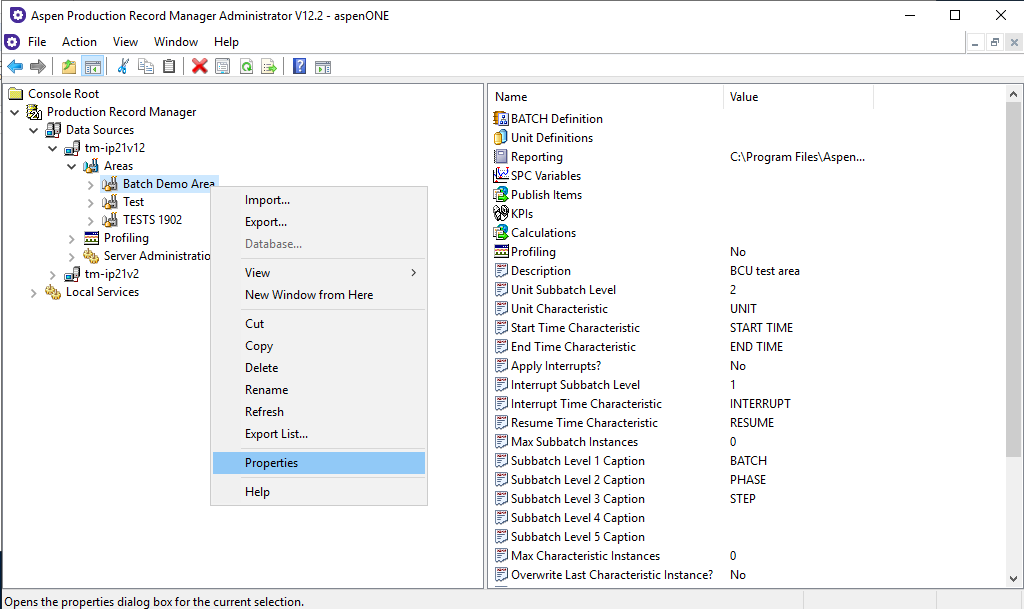
Navigate to Security tab and click Add to assign a role
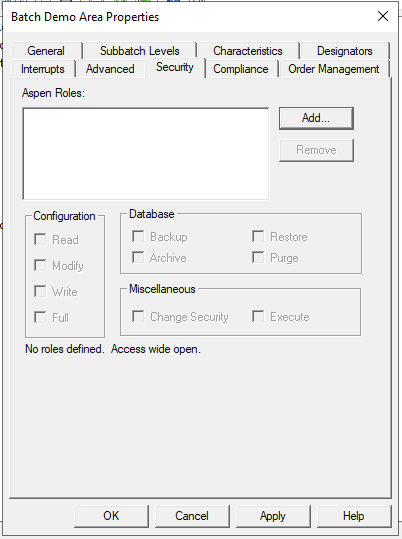
Choose the desired role and click Ok
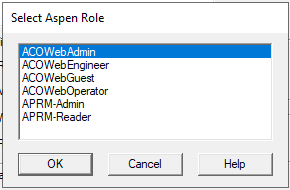
Check the checkbox's of the permissions to assign to the role and click Ok
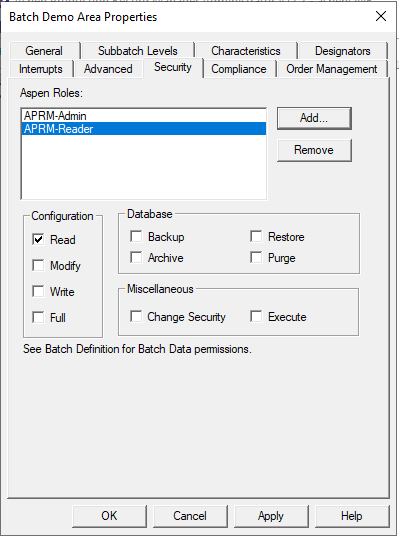
Important
At least one role with Change Security permission is mandatory. The members of this role will be able to change security for the current level
Firewall
If a customer uses a firewall between Plant Integrations and the Aspen Production Record Manager Server, additional ports must be open to allow the DCOM library to communicate with the server.
How to configure
In ConfigHub go to Data in the left side menu, then Data sources, choose + Add data source. Fill out 'Data source details' on the first step of datasource creation wizard: type the name of a data source, select “Aspen Production Record Manager (via SDK)" from Provider dropdown, then select the configured connector from Connect via dropdown.
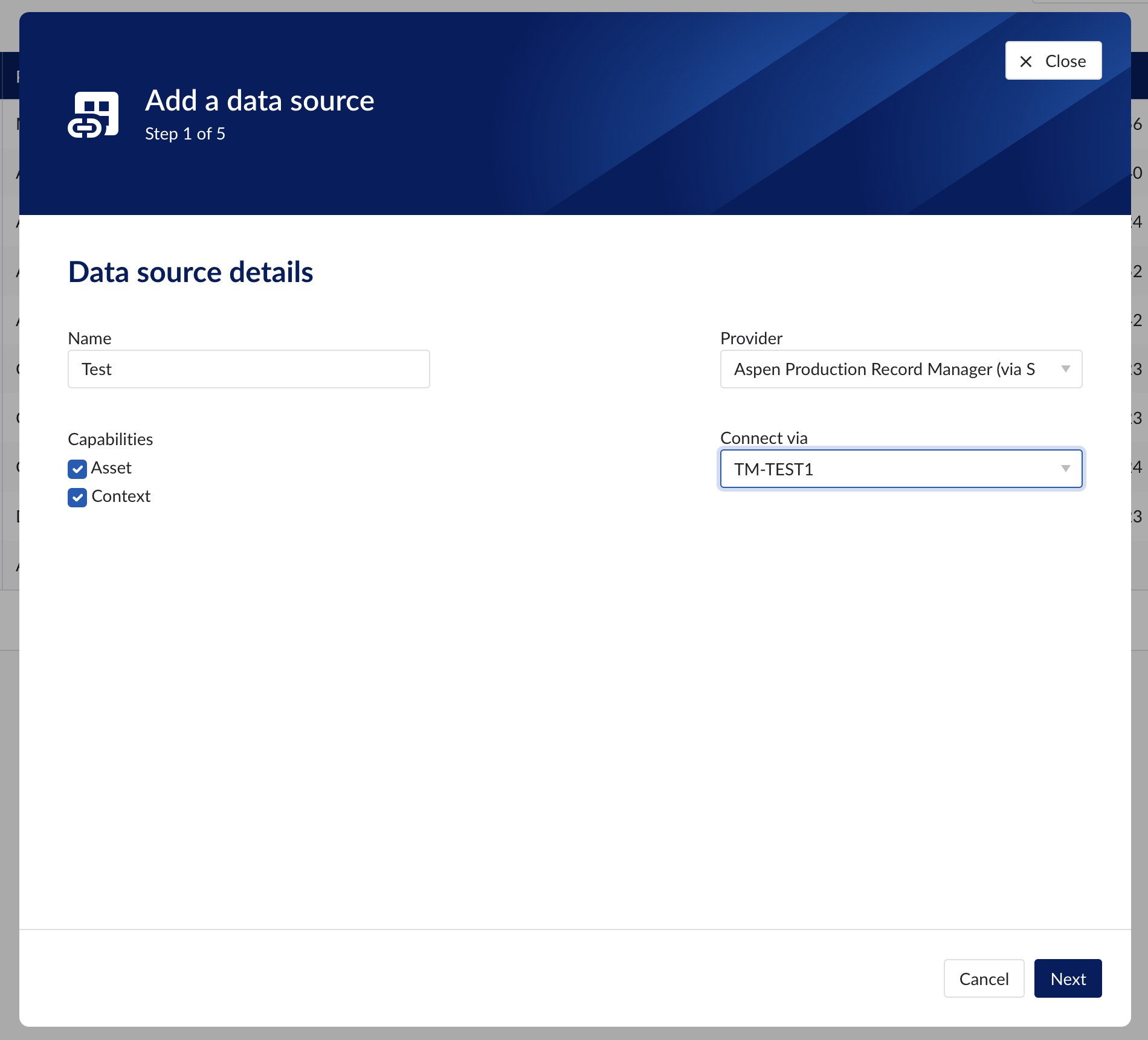
Data source details step in creation wizard
Connection details
To establish a connection, 4 provider properties need to be filled in:
Property | Required? | Description |
|---|---|---|
Area | true | Name of the area inside a specified DataSource where the provider reads its data. |
DataSource | true | Data source used by this provider. The AspenTech Production Record Manager can store multiple data sources on one server instance. |
Username | false | Optional convenience field to enter the username used to establish a connection. |
Password | false | Optional convenience field to enter the password used to establish a connection. |
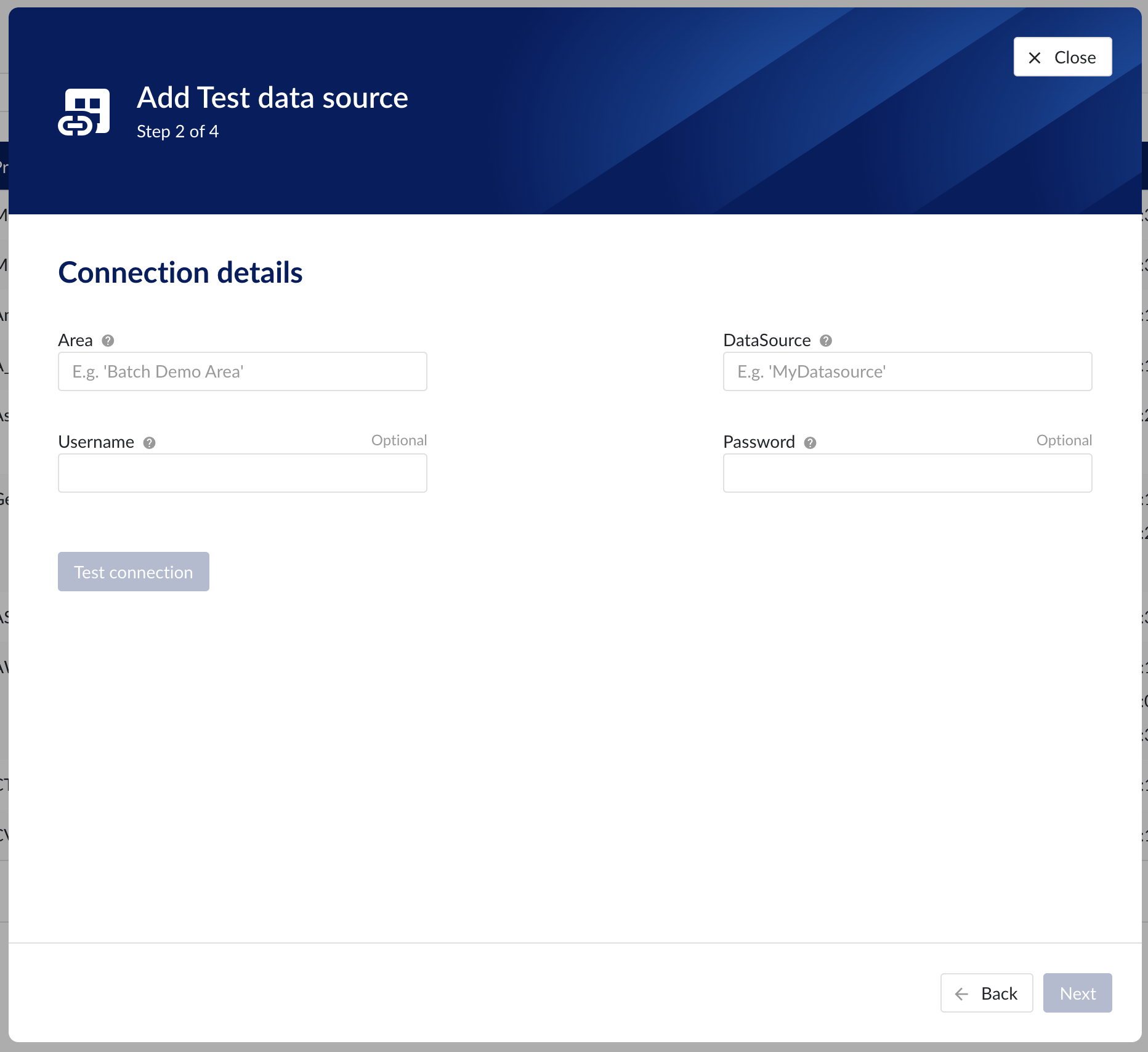
Connection details step in datasource creation wizard
Asset and Context details
The APRM provider implements both asset and context capability.
The asset capability does not require any additional properties to be configured. The context capability has following optional property to configure:
Property | Required? | Description |
|---|---|---|
Number of subbatch levels | false | Override the number of subbatches to read from the area. This must be a number between (inclusive) 1 and 5. By leaving this property empty, all the levels defined in the area are included (APRM has a limit of 5 levels). |
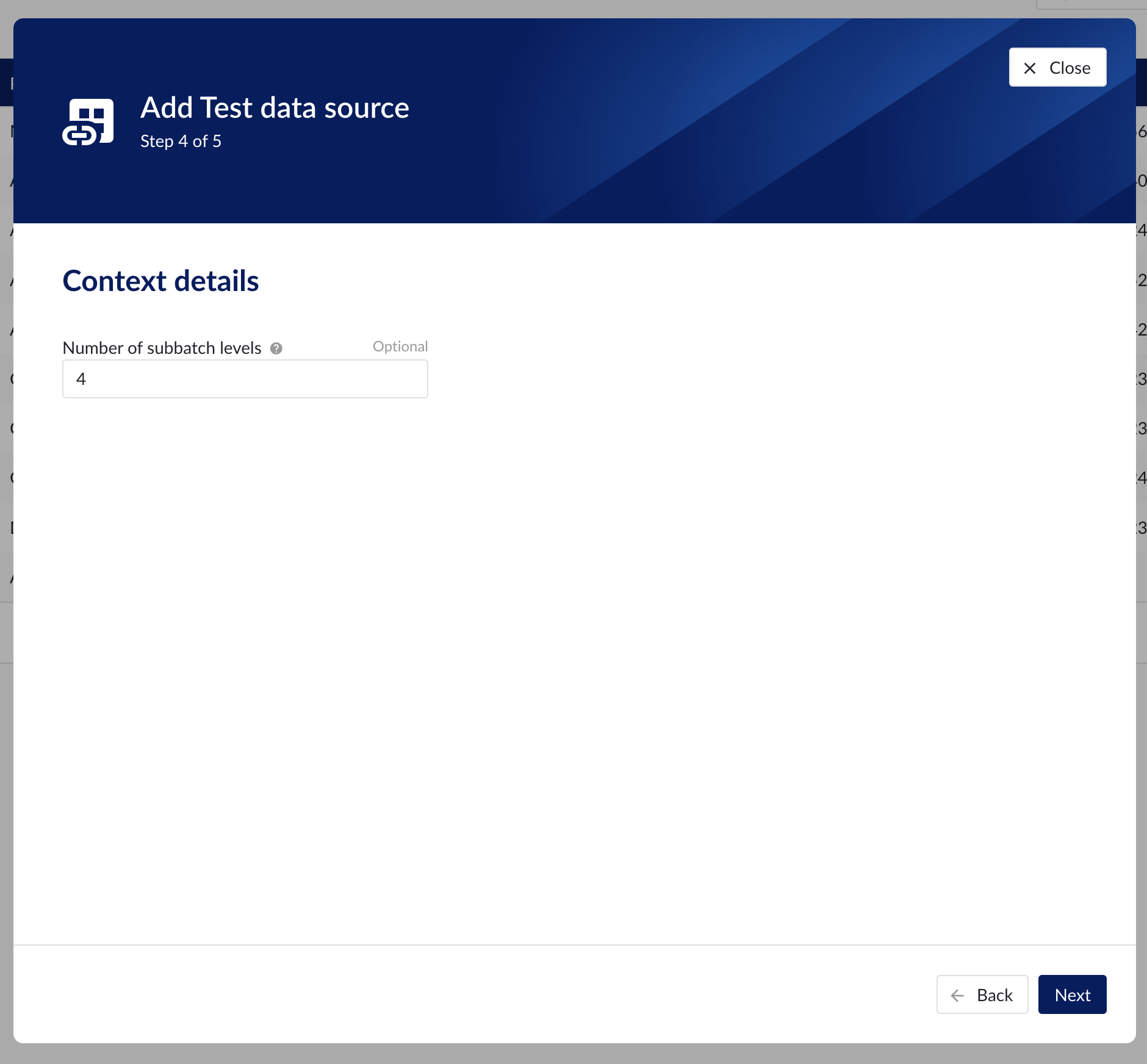
Context details step in datasource creation wizard
Limitations and known issues
Supported versions: Context connectivity / Asset connectivity
Interrupt and Resume characteristics are not supported / ignored by the provider.
Planned Start Time and Planned End Time are not supported / ignored by the provider.